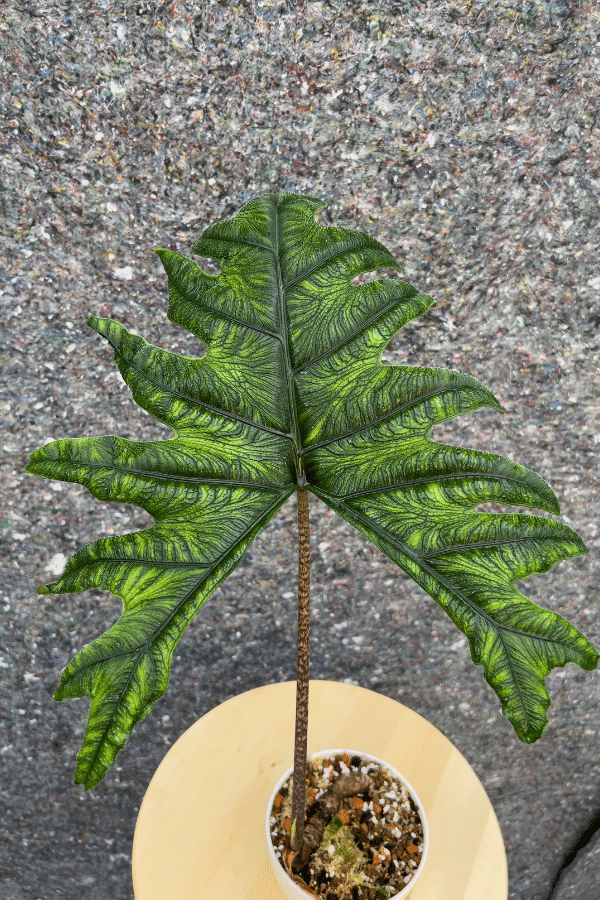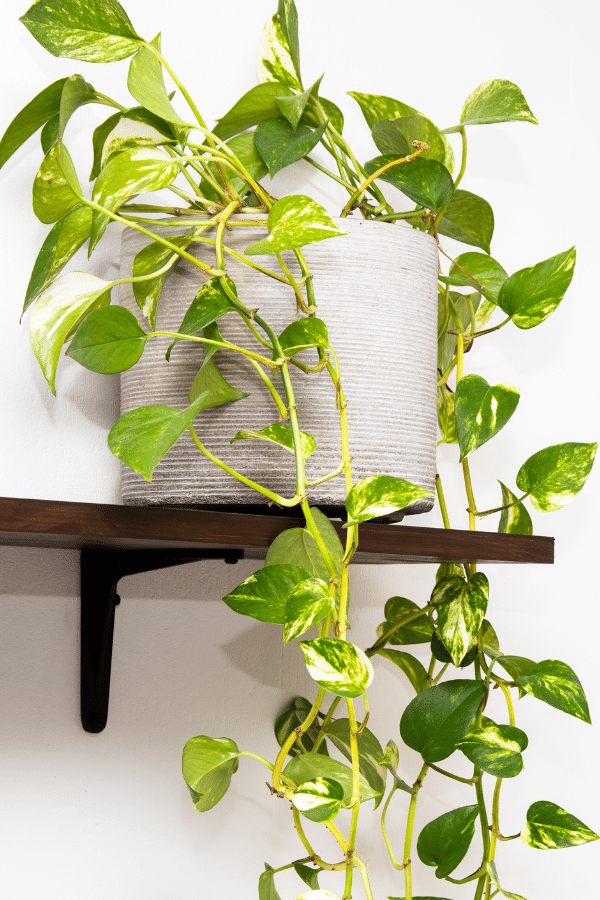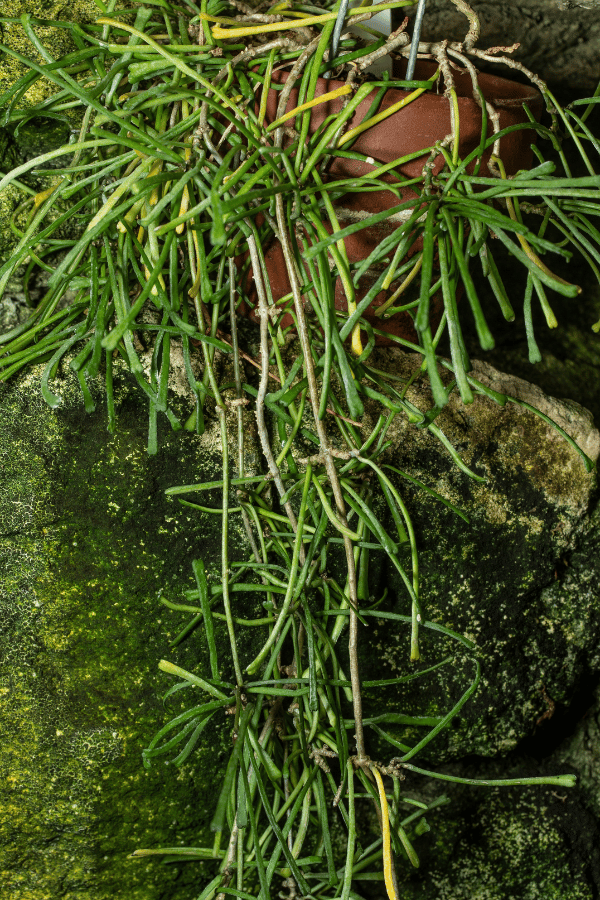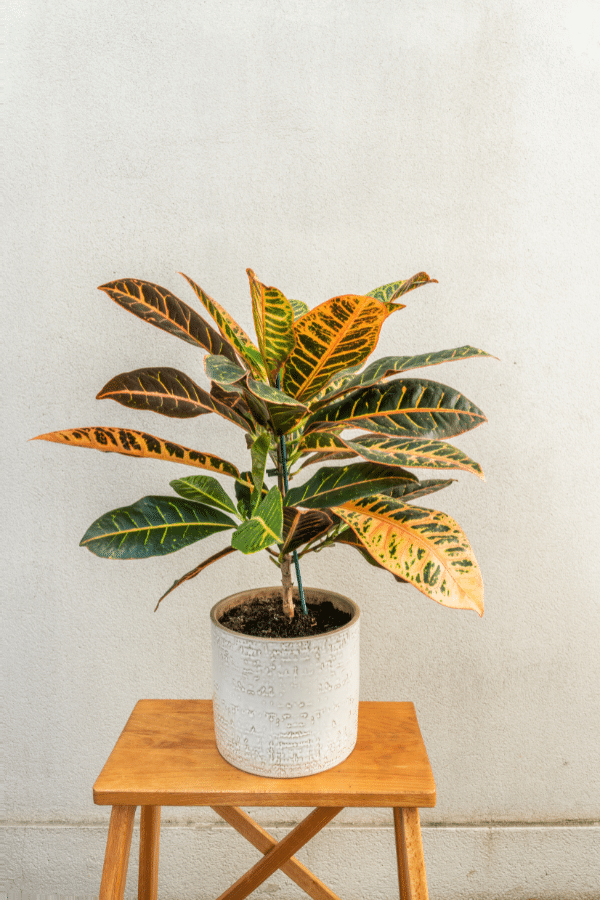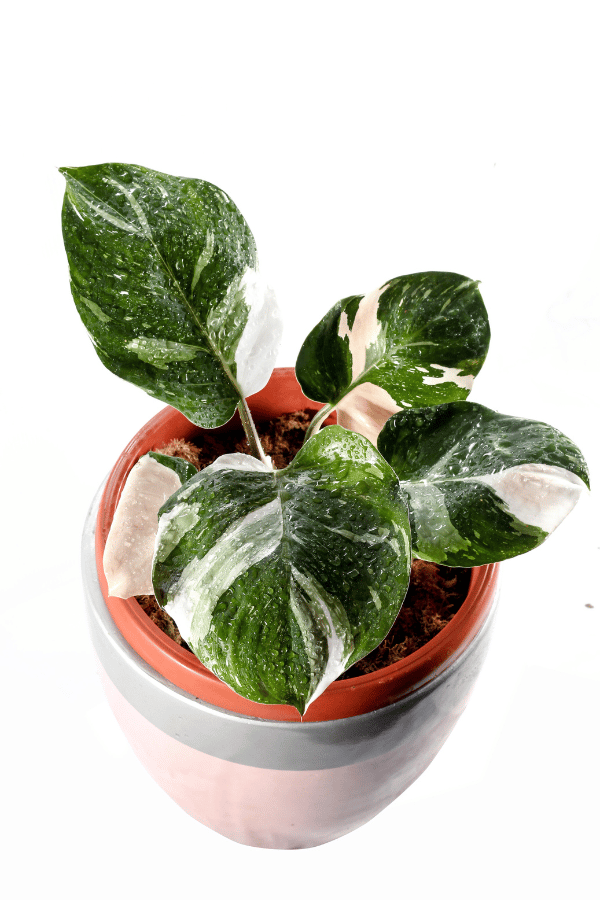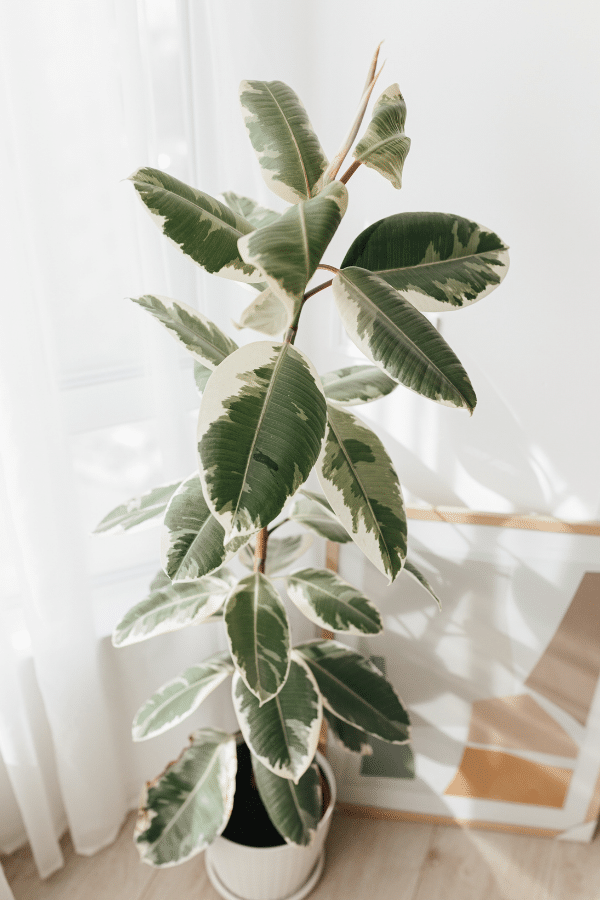Creeping Fig
Creeping Fig care is an easy Ficus to grow and care for and is good for beginners. If you want a houseplant that will trail and cascade for several feet long, learn everything you need to know about caring for Ficus Pumila to see if it’s the right houseplant for you.
To give this Ficus plant the best care, it requires well-draining soil, keep the soil moist but not soggy, provide it bright indirect sunlight, temperatures ranging from 65-85F, and high humidity levels.
Quick Care Overview
| Common Name | Creeping Fig, Climbing Fig |
| Scientific Name | Ficus Pumila |
| Family | Moraceae |
| Origin | Southeast Asia |
| Growth Rate | Medium |
| Identification | Leathery dark green leaves that vine |
| Height | Up to 15 feet in length |
| Soil | Well-draining soil |
| Water | Keep consistently moist but not soggy |
| Temperature | 65-85F |
| Sunlight | Bright indirect light |
| Toxic to Cats & Dogs | Yes |
| Toxic to Humans | Yes |
| Pests | Mealybugs, aphids, scale, whitefly |
| Diseases | Root rot |
Below we will dive deep into this Creeping Fig care guide.
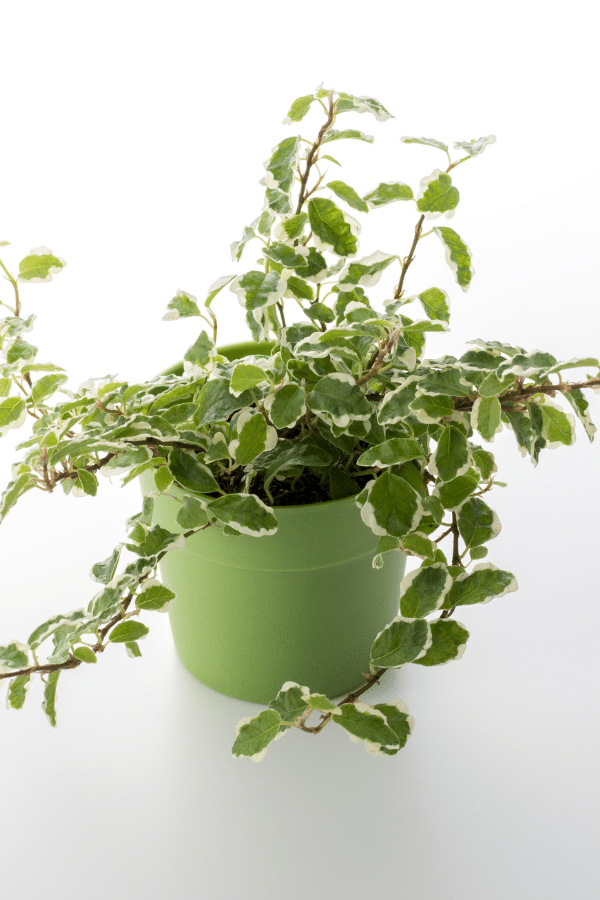
Creeping Fig History
Ficus Pumila, otherwise known as the Creeping Fig and Climbing Fig, is an attractive, easy-to-grow houseplant that can withstand a bit of neglect. Unlike other Ficus trees, the creeping fig is a hardy vining plant. Native to the tropical forests of Southeast Asia, this plant loves to be grown inside terrariums or in hanging pots where it can cascade. This plant is perfect for beginners and may even be grown outdoors if you live in a warm climate.
Creeping Fig Identification
There are several varieties of the Creeping Fig plant. All are vining Ficuses, but leaf size and variegation may vary. Some Creeping Figs can even have curling vines. Foliage of the Creeping Fig tends to grow leathery and dark green with age.
Creeping Fig Growth Facts
The Creeping Fig spreads and grows quickly and requires little intervention, making it the perfect choice for beginners.
How Big Does a Creeping Fig Get?
This Ficus may grow up to 15 feet long unless kept back by regular pruning. However, when grown indoors, this fig will likely stay under 6 feet.
Creeping Fig Care
This Creeping Fig care is easy and will do well as long as it is provided with warm, humid air, even moisture, and bright indirect sunlight. However, you should note that even very healthy plants only tend to last for a few years. This is because this plant has a spreading growth habit, and older portions of this plant die off with age naturally while you will be left with new growth.
Creeping Fig Soil
Creeping Figs are hardy and may be grown in various soil types. They will do fine when planted in any commercial, good-quality potting mix. Ensure that you select a container with ample drainage holes to prevent root rot. Incorporations of perlite into your potting soil can assist with drainage capacity.
Creeping Fig Fertilizer
The Creeping Fig does not require fertilizer in order to proliferate. Still, it can benefit from a diluted feeding of liquid fertilizer monthly throughout the growing season to assist foliar growth. Fertilization should be halted in the winter. Ensure that you follow all label instructions and do not overfertilize.
Creeping Fig Watering
Ficus Pumila likes to have consistently moist soil but does not like to have soil that is oversaturated with water. Allow your soil to dry out before rewatering. Depending on growing conditions, your creeping fig will likely need to be watered about once a week during the warm growing season of spring and summer. Watering frequency may be reduced in fall and winter. If you notice the foliage of your Ficus browning or falling off, you are likely overwatering your plant.
Creeping Fig Light Requirements
Being a tropical plant, the Creeping Fig likes to be kept in bright, indirect sunlight, mimicking the dappled sunlight it might receive on the floor of a tropical forest. You should attempt to provide your Ficus with at least six hours of diffused sunlight daily. This plant may also survive in low light conditions temporarily, but low-light conditions will slow the growth of your plant considerably and may also lead to your Ficus dropping its leaves.
Creeping Fig Temperature & Humidity
As a tropical plant, this Ficus likes to remain warm and moist. It prefers to be kept at temperatures between 65 to 85 degrees Fahrenheit. You should never expose your creeping fig to temperatures below 55 degrees Fahrenheit, which may cause significant damage. Additionally, this plant likes to be grown in above-average humidity. To keep this plant happy, you may want to invest in a pebble tray or humidifier. Alternatively, you may choose to keep this Ficus in a humid room, such as a bathroom, providing there is sufficient light.
Repotting Creeping Fig
You should repot your Ficus biannually or whenever roots are seen poking through drainage holes. However, it is important to note that you may opt not to repot your plant into a larger container as this will encourage the plant to grow. If you choose to keep your fig in the same container to restrict growth, you should trim back its roots and repot it with fresh soil into its existing container. If you choose to select a larger container for your creeping fig, ensure that it is not larger than 2″ bigger than its current container. This will ensure that you do not have overwatering issues due to an overly large container and excess soil. In addition, ensure that you select a container with ample drainage holes at the bottom.
Creeping Fig Maintenance & Pruning
As the Creeping Fig is a vigorous grower, pruning will likely be required to keep it under control. Due to its vining nature, you may choose to leave it alone to climb. However, in a container, it can quickly become overly bushy. This plant can withstand quite a bit of pruning without causing any damage, so snip away! Ensure that you do not remove more than ⅓ of the plant at a time. Additionally, pruning is a great time to take and utilize stem cuttings for propagation. Ideally, the majority of pruning should be done in early spring before rapid new growth kicks off.
Creeping Fig Propagation
The Creeping Fig is easy to propagate through stem cuttings. Ideally, cuttings should be taken in early spring. Use clean, sharp shears to remove stems and pot them into a sterile potting mix. Water the cuttings thoroughly and keep them in indirect light. High humidity encourages rooting, so some individuals opt to place a plastic bag over the cuttings to trap in moisture. When you see new growth emerge from the cutting, you may transplant the cutting into its permanent pot.
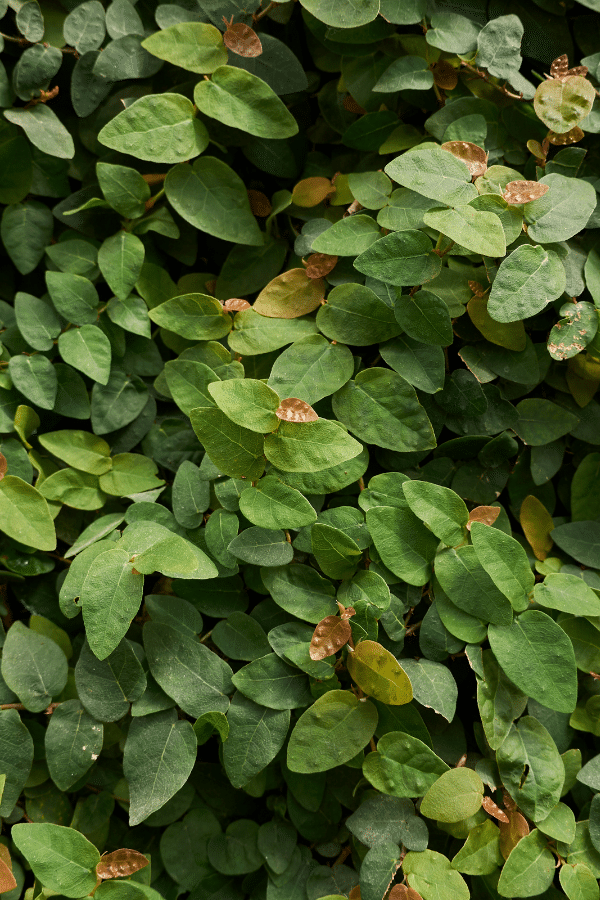
Creeping Fig Toxicity
Like many other Ficus’s, the Creeping Fig, when injured, oozes a milky sap that is toxic to people and pets.
Toxicity to Humans
Because of the milky sap, wearing gloves while repotting or pruning the Climbing Fig is suggested. Although members of the Ficus family produce edible fruits, it is best to play it safe and not consume any portion of this plant or children to access it, as its foliage and stems are toxic.
Toxicity to Cats & Dogs
This plant is considered toxic to pets and should never be ingested. However, if you suspect your pet has consumed any portion of this plant, contact your veterinarian or animal poison control immediately.
Creeping Fig Problems
Creeping Fig Leaves Turning Yellow
The number one cause of yellowing foliage is either from overwatering or incorrect lighting.
Creeping Fig Leaves Turning Brown
When it comes to the creeping fig, the browning of the foliage is usually due to overwatering.
Creeping Fig Diseases
Ficus plants are easily affected by root rot, so it is pertinent that you do not overwater your plant and that you select a container and soil that provides ample drainage. Additionally, watering the leaves may lead to fungal issues.
Creeping Fig Pests
This Ficus plant may become susceptible to indoor pests, including aphids, whiteflies, mealybugs, and scale. Isolate your plant and treat it with a pesticide such as neem oil or insecticidal soap upon identifying an infestation.

